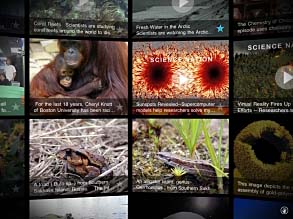Since it’s Friday before a long weekend (Canada Day on July 1, 2012 this coming Sunday), I want to end the week on a poetic note. Concordia University’s P.o.E.M.M. (Poems for Excitable [Mobile] Media) project recently won an award from the Electronic Literature Organization at its annual exhibition held June 22 – 23, 2012 in West Virginia. From the June 28, 2012 news item on physorg.com,
Poetry has been following the rules for centuries. From the strict structure of the haiku to the rhythmic rhyme of the ballad, verse can be daunting to both professional poets and amateur auteurs. But poems are also media for the masses and one Concordia researcher is using mass media to put them back in the hands of the people.
Jason Lewis’s work is an integral part of Concordia’s Department of Design and Computation Arts, with projects ranging from computer game development to typographic design. A poet as well as a techie, the associate professor is combining his computing skills with the act of literary creation to develop new methods of poetic expression through a suite of ten brand new digital poetry apps.
Known as P.o.E.M.M., short for Poems for Excitable [Mobile] Media, the project is a series of poems written and designed to be read on touch devices, from large-scale exhibition surfaces to mobile screens.
For Lewis, the fact that the iPhone and iPad are personal devices was key in P.o.E.M.M.’s development. “Poetry is an intimate medium but when it comes to digital poetry, the computer screen creates distance between writer and reader. Touch screens allow the audience to be drawn into a closer proximity to the computer screen than ever before,” says Lewis, whose first digital poetry project for a touch-screen interface was created back in 2007, when the iPhone was in its infancy.
Here’s a video of the Smooth Second Bastard piece,
From the June 27, 2012 news item by Cléa Desjardins for Concordia University,
Smooth Second Bastard features three texts that are related meditations on the difference between being asked “where ya from” and being asked “are you from around here?” [which was released on June 26, 2012]
The first version of each app is built around Lewis’s poetry, but then each is extended to include texts by other poets, who write on themes ranging from miscommunication across language and cultural identity to the excitement of heading out into a great unknown.
Released as separate applications available for download through iTunes, and developed in collaboration with former computation arts student Bruno Nadeau, the P.o.E.M.M. apps allow readers to interact with the poem’s text. New iterations of the apps will give users the chance to add their own words, use Twitter feeds to generate new strands of poetry, and to play with words, design and structure to generate original poems that can be rewritten at the tap of a screen.
If you go to the P.o.E.M.M. website, you’ll find more pieces, their apps, and descriptions such as this,
Smooth Second Bastard is a meditation on the difference between being asked “where ya from” and being asked “are you from around here?” Growing up where and how I did, [emphasis mine] I tend to see insider-outsider dynamics before I see prejudice. Such a viewpoint can be gracious or naïve, and I sometimes find it difficult to tell which.
Smooth Second Bastard was commissioned by the imagineNATIVE Festival for the Vital to the General Public Welfare exhibition. The exhibition version consists of a triptych with 42″ two-point touch surface + a 122″ x 13″ digital print + a 40″ x 24″ digital print.
As for Lewis’ comment ” Growing up where and how I did”, I excerpted this description from Lewis in his ‘No Choice About the Terminology’ piece,
… often struggling with what terminology to use to describe my ethnicity (Cherokee, Hawaiian, Samoan, raised in northern California rural mountain redneck culture), and my profession (artist? poet? software developer? educator? designer?), and recognizing both the danger and seduction of neat categorizations …
Interesting to contemplate “where ya from/are you from around here” and how we classify ourselves as we celebrate Canada’s 145th anniversary.
